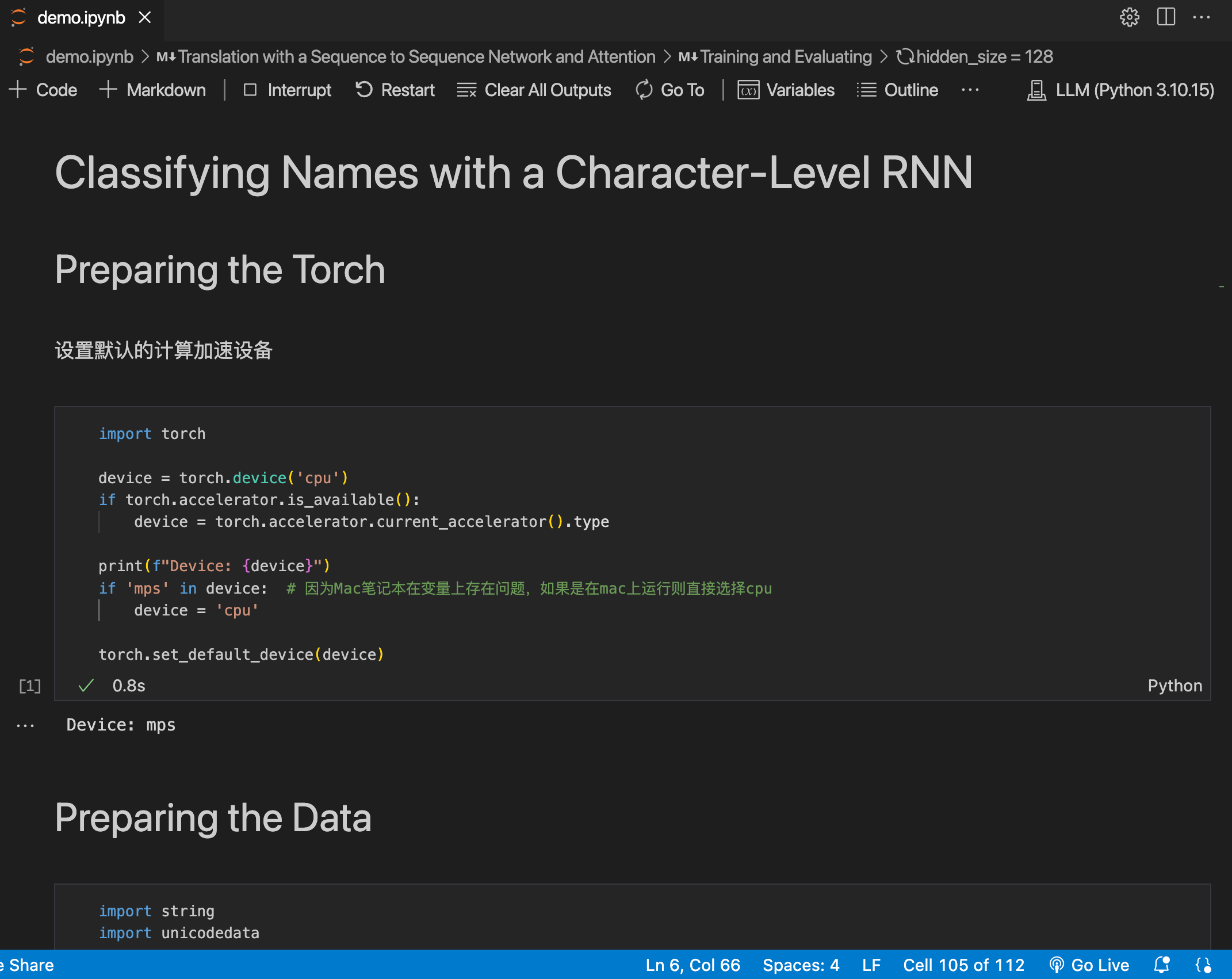GeoJSON点、线、面在地图中的应用教程
SFMap
一、引言
GeoJSON是一种对各种地理数据结构进行编码的格式,常用于在地图上展示不同的地理要素,如点、线、面。本教程将详细介绍如何使用GeoJSON来表示点、线、面的单个与多个数组形式,并结合代码示例展示它们在地图上的呈现效果。我们将以顺丰地图API为例进行讲解,确保你能快速上手并应用到实际项目中。
二、准备工作
- 首先,你需要在顺丰地图平台申请一个开发者账号,获取对应的
ak值,用于在代码中加载地图。 - 了解基本的HTML、JavaScript和CSS知识,因为我们的示例代码基于这些技术构建。
三、点的应用
(一)单个点
- 代码示例
<!DOCTYPE html>
<html>
<head><meta charset="utf-8" /><title>GeoJSON-单个点</title><meta name="viewport" content="initial-scale=1,maximum-scale=1,user-scalable=no" /><script src="https://webmap.sf-express.com/api/map?v=3.1&ak=你的ak值"></script><style>body { margin: 0; padding: 0; }#map { position: absolute; top: 0; bottom: 0; width: 100%; }</style>
</head>
<body><div id="map"></div><script>var map = new SFMap.Map({container: 'map',center: [113.99709, 22.56859],zoom: 9});map.on('load', function() {map.addSource('point', {'type': 'geojson','data': {'type': 'Feature','geometry': {'type': 'Point','coordinates': [113.907826,22.643389]},'properties': {'title': 'Marker-1','icon': '2'}}});map.addLayer({'id': 'point','type': 'symbol','source': 'point','layout': {'icon-image': ['concat', 'icon_', ['get', 'icon']],'text-field': ['get', 'title'],'text-offset': [0, 0.6],'text-anchor': 'top'}});});</script>
</body>
</html>
- 代码解释
- 引入地图API并初始化地图容器、设置地图的初始中心坐标和缩放级别。
- 使用
map.addSource添加一个GeoJSON数据源,类型为Feature,几何类型是Point,指定了一个点的坐标[113.907826,22.643389],同时设置了一些属性如title和icon,用于标识和美化该点标记。 - 通过
map.addLayer添加一个图层,设置图层的id、type(这里是symbol,用于显示符号化的点)、source(关联之前定义的数据源),并在layout中配置图标和文本显示方式,比如根据icon属性获取图标,根据title属性显示文本。
(二)点的数组(多个点)
- 代码示例
<!DOCTYPE html>
<html>
<head><meta charset="utf-8" /><title>GeoJSON-点的数组</title><meta name="viewport" content="initial-scale=1,maximum-scale=1,user-scalable=no" /><script src="https://webmap.sf-express.com/api/map?v=3.1&ak=你的ak值"></script><style>body { margin: 0; padding: 0; }#map { position: absolute; top: 0; bottom: 0; width: 100%; }</style>
</head>
<body><div id="map"></div><script>var map = new SFMap.Map({container: 'map',center: [113.99709, 22.56859],zoom: 9});map.on('load', function() {map.addSource('points', {'type': 'geojson','data': {'type': 'FeatureCollection','features': [{'type': 'Feature','geometry': {'type': 'Point','coordinates': [113.907826,22.643389]},'properties': {'title': 'Marker-1','icon': '2'}},{'type': 'Feature','geometry': {'type': 'Point','coordinates': [114.196217,22.650993]},'properties': {'title': 'Marker-2','icon': '3'}}]}});map.addLayer({'id': 'points','type': 'symbol','source': 'points','layout': {'icon-image': ['concat', 'icon_', ['get', 'icon']],'text-field': ['get', 'title'],'text-offset': [0, 0.6],'text-anchor': 'top'}});});</script>
</body>
</html>
- 代码解释
- 整体结构与单个点类似,但数据源部分有所不同。这里使用
FeatureCollection作为data的类型,表示一个要素集合。 features数组中包含多个Feature对象,每个对象都代表一个点,有各自的坐标、title和icon属性。这样就可以在地图上一次性添加多个点标记,并且每个点可以有不同的样式。
- 整体结构与单个点类似,但数据源部分有所不同。这里使用
四、线的应用
(一)单条线
- 代码示例
<!DOCTYPE html>
<html>
<head><meta charset="utf-8" /><title>GeoJSON-单条线</title><meta name="viewport" content="initial-scale=1,maximum-scale=1,user-scalable=no" /><script src="https://webmap.sf-express.com/api/map?v=3.1&ak=你的ak值"></script><style>body { margin: 0; padding: 0; }#map { position: absolute; top: 0; bottom: 0; width: 100%; }</style>
</head>
<body><div id="map"></div><script>var map = new SFMap.Map({container: 'map',center: [113.99709, 22.56859],zoom: 12});map.on('load', function() {map.addSource('route', {'type': 'geojson','data': {'type': 'Feature','properties': {},'geometry': {'type': 'LineString','coordinates': [[113.993571,22.590078],[113.963702,22.581271],[113.967478,22.550201],[114.005072,22.541957],[114.01829,22.5573305],[114.027045,22.582856]]}}});map.addLayer({'id': 'route','type': 'line','source': 'route','layout': {'line-join': 'round','line-cap': 'round'},'paint': {'line-color': '#0000ff','line-width': 8}});});</script>
</body>
</html>
- 代码解释
- 同样先初始化地图。
- 数据源
data中,type为Feature,geometry.type为LineString,表示这是一条线。coordinates数组里的一系列经纬度坐标点依次连接起来形成一条连续的线。 - 添加的图层
type为line,并在layout中设置线的连接方式(line-join)和端点样式(line-cap)为圆形,在paint中设置线的颜色为蓝色(#0000ff),宽度为8px。
(二)线段的数组(多条线)
- 代码示例
<!DOCTYPE html>
<html>
<head><meta charset="utf-8" /><title>GeoJSON-线段的数组</title><meta name="viewport" content="initial-scale=1,maximum-scale=1,user-scalable=no" /><script src="https://webmap.sf-express.com/api/map?v=3.1&ak=你的ak值"></script><style>body { margin: 0; padding: 0; }#map { position: absolute; top: 0; bottom: 0; width: 100%; }</style>
</head>
<body><div id="map"></div><script>var map = new SFMap.Map({container: 'map',center: [113.99709, 22.56859],zoom: 12});map.on('load', function() {map.addSource('routes', {'type': 'geojson','data': {'type': 'Feature','properties': {},'geometry': {'type': 'MultiLineString','coordinates': [[[113.993571, 22.590078],[113.963702, 22.581271]],[[113.967478, 22.550201],[114.005072, 22.541957]],[[114.01829, 22.5573305],[114.027045, 22.582856]]]}}});map.addLayer({'id': 'routes','type': 'line','source': 'routes','layout': {'line-join': 'round','line-cap': 'round'},'paint': {'line-color': '#0000ff','line-width': 8}});});</script>
</body>
</html>
- 代码解释
- 初始化地图,中心坐标和缩放级别按需设置。
- 数据源部分,
geometry.type为MultiLineString,这表示一个多线段的集合。coordinates是一个二维数组的数组,每个子数组代表一条独立的线段,其内部的坐标点连接成一条线段。 - 图层设置与单条线类似,设置线的样式,使得多条线段都以蓝色、宽度为
8px,连接和端点为圆形的样式展示。
(二)线段的数组(多条线2)
- 代码示例
<!DOCTYPE html>
<html><head><meta charset="utf-8" /><title>GeoJSON-线段的数组</title><meta name="viewport" content="initial-scale=1,maximum-scale=1,user-scalable=no" /><script src="https://webmap.sf-express.com/api/map?v=3.1&ak=你的ak值"></script><style>body {margin: 0;padding: 0;}#map {position: absolute;top: 0;bottom: 0;width: 100%;}</style>
</head><body><div id="map"></div><script>var map = new SFMap.Map({container: 'map',center: [113.99709, 22.56859],zoom: 9});const data = {'type': 'geojson','data': {'type': 'FeatureCollection','features': [{'type': 'Feature','geometry': {'type': 'LineString','coordinates': [[113.907826, 22.643389],[114.196217, 22.650993]]},'properties': {id: 'Line-1','name': 'Line-1',clicked: false,'lineColor': '#FF0000'}},{'type': 'Feature','geometry': {'type': 'LineString','coordinates': [[113.95, 22.6],[114.05, 22.62]]},'properties': {id: 'Line-2','name': 'Line-2','lineColor': '#00FF00',clicked: false,}}]}}map.on('load', function () {map.addSource('lines', data);map.addLayer({'id': 'lines','type': 'line','source': 'lines','layout': {'line-join': 'round','line-cap': 'round'},'paint': {'line-color': ['case',['boolean', ['get', 'clicked'], false],'#e55e5e','#3bb2d0'],'line-width': 30}});// 监听点击事件--- 切换线颜色map.on('click', 'lines', function (e) {const feature = e.features[0];console.log(feature, map.getSource('lines'));const featureId = feature.properties.id;const features = data.data.features;// 先将所有点的 clicked 属性设为 falsefeatures.forEach((feature) => {feature.properties.clicked = false;});// 再将被点击点的 clicked 属性设为 truefor (let i = 0; i < features.length; i++) {if (features[i].properties.id === featureId) {features[i].properties.clicked = true;break;}}// 创建一个新的 GeoJSON 数据对象,避免可能的引用问题const newData = {type: 'FeatureCollection',features: features.map(feature => ({type: feature.type,geometry: feature.geometry,properties: { ...feature.properties }}))};map.getSource('lines').setData(newData);});});</script>
</body></html>
-
代码解释
下面是将上述点的数组代码改写成线段的数组,并且使用FeatureCollection的代码示例: -
数据源:在
map.addSource中,data的类型为FeatureCollection,其features数组包含了多个Feature对象,每个Feature对象代表一条线段。 -
线段几何:每个
Feature对象中的geometry类型为LineString,coordinates数组定义了线段的端点坐标。 -
线段属性:每个
Feature对象的properties中包含了线段的名称(name)和颜色(lineColor)。 -
图层样式:在
map.addLayer中,paint属性中的line-color使用['get', 'lineColor']从每个线段的properties中获取颜色,line-width设置线段的宽度为 3。
请将 你的ak值 替换为你实际申请到的 AK 值。
五、面的应用
(一)单个面
- 代码示例
<!DOCTYPE html>
<html>
<head><meta charset="utf-8" /><title>GeoJSON-单个面</title><meta name="viewport" content="initial-scale=1,maximum-scale=1,user-scalable=no" /><script src="https://webmap.sf-express.com/api/map?v=3.1&ak=你的ak值"></script><style>body { margin: 0; padding: 0; }#map { position: absolute; top: 0; bottom: 0; width: 100%; }</style>
</head>
<body><div id="map"></div><script>var map = new SFMap.Map({container: 'map',center: [113.99709, 22.56859],zoom: 12});map.on('load', function() {map.addSource('area', {'type': 'geojson','data': {'type': 'Feature','geometry': {'type': 'Polygon','coordinates': [[[113.993571, 22.590078],[113.963702, 22.581271],[113.967478, 22.550201],[114.005072, 22.541957],[114.01829, 22.5573305],[114.027045, 22.582856],[113.993571, 22.590078]]]},'properties': {'name': '区域1','fillColor': '#FF0000'}}});map.addLayer({'id': 'area','type': 'fill','source': 'area','layout': {},'paint': {'fill-color': ['get', 'fillColor'],'fill-opacity': 0.5}});});</script>
</body>
</html>
- 代码解释
- 初始化地图,设置容器、中心和缩放级别。
- 数据源
data中,type为Feature,geometry.type为Polygon,表示一个多边形面。coordinates数组里的经纬度坐标点按顺序连接形成封闭的多边形,注意最后一个坐标点与第一个坐标点相同,确保多边形封闭。 - 添加的图层
type为fill,用于填充多边形面。在paint中,根据fillColor属性设置填充颜色,同时设置填充透明度为0.5,使得面呈现半透明效果。
(二)面的数组(多个面)
- 代码示例
<!DOCTYPE html>
<html>
<head><meta charset="utf-8"><title>GeoJSON - 面的数组</title><meta name="viewport" content="initial-scale=1,maximum-scale=1,user-scalable=no"><script src="https://webmap.sf-express.com/api/map?v=3.1&ak=你申请的ak值"></script><style>body {margin: 0;padding: 0;}#map {position: absolute;top: 0;bottom: 0;width: 100%;}</style>
</head>
<body><div id="map"></div><script>var map = new SFMap.Map({container:'map',center: [113.99709, 22.56859],zoom: 12});map.on('load', function () {map.addSource('areas', {'type': 'geojson','data': {'type': 'FeatureCollection','features': [{'type': 'Feature','geometry': {'type': 'Polygon','coordinates': [[[113.993571, 22.590078],[113.963702, 22.581271],[113.967478, 22.550201],[114.005072, 22.541957],[114.01829, 22.5573305],[114.027045, 22.582856],[113.993571, 22.590078]]]},'properties': {'name': '区域1','fillColor': '#FF0000'}},{'type': 'Feature','geometry': {'type': 'Polygon','coordinates': [[[114.05, 22.6],[114.07, 22.6],[114.07, 22.58],[114.05, 22.58],[114.05, 22.6]]]},'properties': {'name': '区域2','fillColor': '#00FF00'}}]}});map.addLayer({'id': 'areas','type': 'fill','source': 'areas','layout': {},'paint': {'fill-color': ['get', 'fillColor'],'fill-opacity': 0.5}});});</script>
</body>
</html>
- 代码解释
- 数据结构升级:数据源
data的类型为FeatureCollection,这是用于容纳多个地理要素的集合类型。features数组中包含多个Feature对象,每个对象代表一个面。每个面都有独立的geometry(Polygon类型)和properties(包含名称和填充颜色等属性)。例如,第一个面描述了一个区域,坐标构成了一个多边形形状,设置填充颜色为红色(#FF0000);第二个面定义了另一个区域,坐标构成不同的多边形,填充颜色为绿色(#00FF00)。 - 图层统一展示:添加的
fill类型图层,通过['get', 'fillColor']从每个面的properties中获取填充颜色,统一设置填充透明度为0.5。这样,多个面都能以各自的颜色和半透明效果展示在地图上。
- 数据结构升级:数据源
(二)面的数组(多个面2)
- 代码示例
<!DOCTYPE html>
<html><head><meta charset="utf-8" /><title>GeoJSON-面</title><metaname="viewport"content="initial-scale=1,maximum-scale=1,user-scalable=no"/><script src="https://webmap.sf-express.com/api/map?v=3.1&ak=你申请的ak值"></script><style>body {margin: 0;padding: 0;}#map {position: absolute;top: 0;bottom: 0;width: 100%;}</style></head><body><div id="map"></div><script>var styleTemplate = `https://webmap-vs5.sf-express.com/MapVTService/vmapx/mapstyle/{theme}`;var map = new SFMap.Map({container: "map",style: styleTemplate.replace("{theme}", "allvector_enchanting-blue"),center: [116.400692761014, 39.850699628034],zoom: 18,});map.on("load", function () {const data1 = {type: "geojson",data: {type: "FeatureCollection",features: [{type: "Feature",id: 0,geometry: {type: "MultiPolygon",coordinates: [[[[116.400683482718, 39.850699628034],[116.400682519384, 39.8506886992082],[116.400576207334, 39.8506988324359],[116.400564865252, 39.8506999061965],[116.400562496831, 39.8507001289091],[116.400569347375, 39.8507570969861],[116.400687861122, 39.8507455223314],[116.400683482718, 39.850699628034],],],[[[116.400755046613, 39.8506737754861],[116.400721471261, 39.850671031674],[116.400716721685, 39.8507409037637],[116.400748935819, 39.8507434975927],[116.400755046613, 39.8506737754861],],],[[[116.400692761014, 39.8506649365395],[116.400685375175, 39.8505802335779],[116.400631043975, 39.850584741423],[116.400638706392, 39.8506697605966],[116.400692761014, 39.8506649365395],],],],},properties: {x: "116.400645943918",y: "39.850680291962",level: 4,type: 4,value: 0,label: "后村149号",isArea: true,selected: true, // 符合条件},},],},};map.addSource("maine", data1);const highlightFillLayer = {id: "fill_highlight_ea70e077-c2df-4db0-ab27-b56bcef23e4e",type: "fill",source: "maine",filter: ["all", ["has", "selected"], ["==", "selected", true]], //全部满足条件才行 paint: {"fill-color": "red","fill-opacity": 0.38,},};map.addLayer(highlightFillLayer);});</script></body>
</html>你提供的这两段代码都实现了在地图上展示多个面的功能,但它们在 GeoJSON 数据结构的表示上存在一些区别,具体如下:
(二)面的数组(对比)
- GeoJSON 要素类型和结构:
- 第一段代码(多个面的示例):使用的是
FeatureCollection类型来包含多个Feature对象,每个Feature对象的geometry类型为Polygon,表示单个的多边形面。也就是说,它是将每个面作为独立的Feature放在features数组中,如下所示:
- 第一段代码(多个面的示例):使用的是
{'type': 'FeatureCollection','features': [{'type': 'Feature','geometry': {'type': 'Polygon','coordinates': [// 面1的坐标数组]},'properties': {'name': '区域1','fillColor': '#FF0000'}},{'type': 'Feature','geometry': {'type': 'Polygon','coordinates': [// 面2的坐标数组]},'properties': {'name': '区域2','fillColor': '#00FF00'}}]
}
- **第二段代码**:使用的是单个 `Feature` 对象,其 `geometry` 类型为 `MultiPolygon`,`MultiPolygon` 的 `coordinates` 是一个二维数组,每个子数组又包含一个多边形的坐标数组。这种方式是将多个多边形组合在一个 `MultiPolygon` 几何对象中,而不是像第一段代码那样每个多边形对应一个独立的 `Feature`,如下所示:
{'type': 'Feature','id': 0,'geometry': {'type': 'MultiPolygon','coordinates': [[[// 多边形1的坐标数组]],[[// 多边形2的坐标数组]]]},'properties': {'name': '区域2','fillColor': '#00FF00'}
}
-
属性关联和管理:
- 第一段代码:每个面(
Feature)都可以有自己独立的属性集。例如,面1有name为区域1和fillColor为#FF0000,面2有name为区域2和fillColor为#00FF00。这样在处理和管理每个面的属性时更加灵活,可以根据不同面的特点设置不同的属性。 - 第二段代码:由于多个多边形都包含在一个
Feature中,它们共享一套属性。在当前代码中,所有多边形都关联了name为区域2和fillColor为#00FF00的属性。如果想要为不同的多边形设置不同的属性,这种结构就不太方便,需要额外的处理逻辑。
- 第一段代码:每个面(
-
应用场景:
- 第一段代码:适用于多个面之间相对独立,每个面可能具有不同的地理意义、属性或需要单独进行操作和管理的情况。比如展示不同的行政区域、不同类型的地理区域等。
- 第二段代码:适用于多个多边形在逻辑上属于同一个整体,具有相同的属性或需要作为一个整体进行处理的情况。例如,一个由多个子区域组成的复杂区域,这些子区域共同构成一个特定的地理对象。
综上所述,两段代码虽然都能展示多个面,但在数据结构和适用场景上存在明显的区别。



















